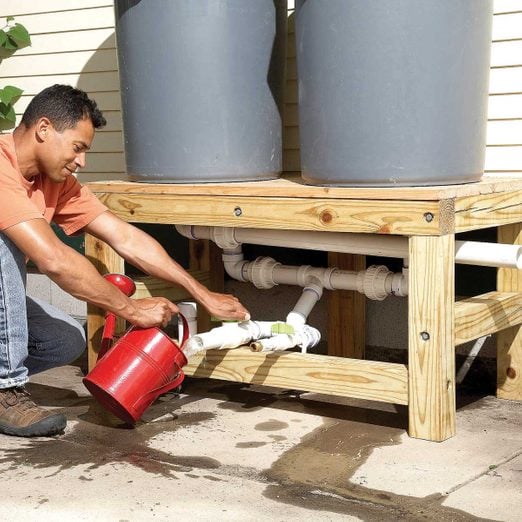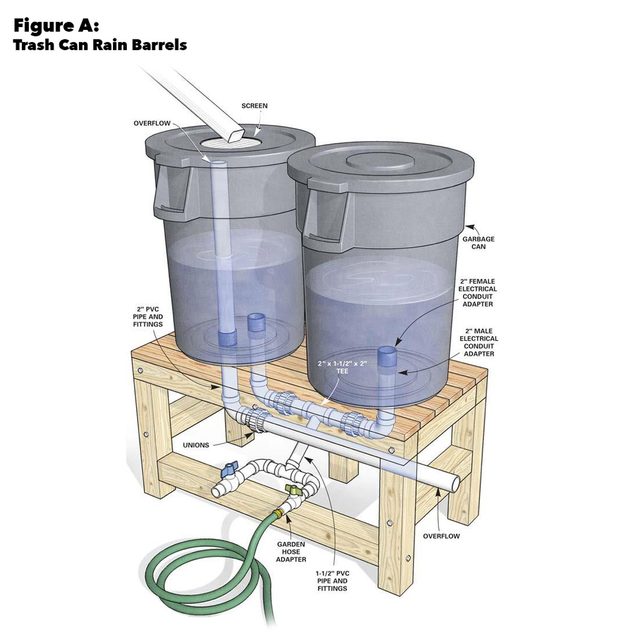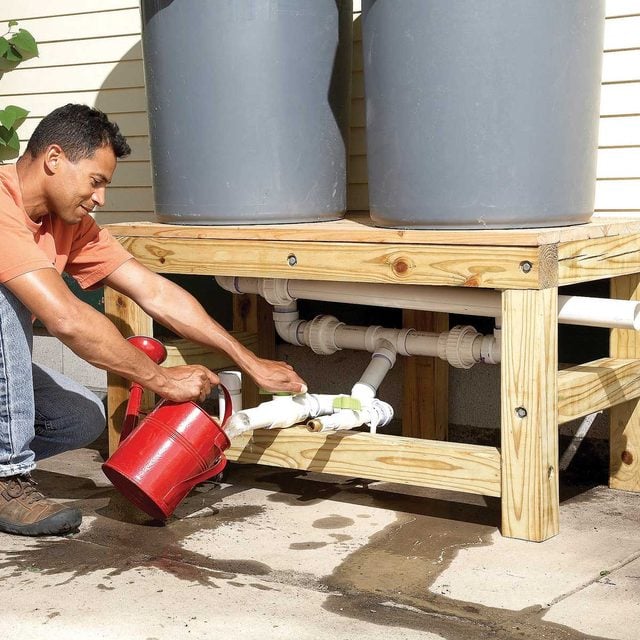How to Build a Rain Barrel
Introduction
This DIY rain barrel is inexpensive and works just as well as ones you can buy. Get complete how-to instructions and start saving water with the next rainfall.Tools Required
- 2-1/4 in Hole saw
- Cordless drill
Materials Required
- 2-in. female threaded electrical (gray PVC) conduit adapter
- 2-in. male threaded electrical (gray PVC) conduit adapter
- 4x4 treated lumber and construction screws or stainless steel lags
- 55-gal. barrel with lid
- Glue
- if you build a stand to elevate the rain barrel(s)
- Screen
- Sections of 2-in. PVC pipe
- Silicone caulk
- Threaded electrical PVC coupler
- Unions reducers and valves
How to Make Your Own Rain Barrel
It’s pretty easy to build your own rain barrels from plastic drums or trash cans. Search online for “bottles” or “containers” to find an “open head” plastic 55-gallon drum with a cover. Or find a used barrel by talking to car wash managers (they buy soap and wax by the barrel). If you can’t find a container you like, buy a large, heavy-duty garbage can at a home center. Here’s a collection of our favorite decorative rain barrels. Also, find out what is a rain chain.
Project step-by-step (3)
Trash Can Rain Barrels
You can make cheap, functional rain barrels with trash cans and simple PVC plumbing and electrical conduit fittings. Line up as many as you need to meet your watering needs and save water around your house.
To begin, place the drum near a downspout, drill a hole in the side near the bottom and screw in a drain valve. That’s an OK installation if you plan to run a soaker hose to your garden. But if you want to use a wand or a spray nozzle, you’ll need to elevate the DIY rain barrel on a stand for more water pressure. Water is heavy (55 gallons weighs 440 lbs.), so use 4×4 treated lumber for the legs and secure everything with construction screws or stainless steel lags. But don’t place the stand on soft ground. You could kill somebody if the rig toppled over. If you have large gardens and want to store more water, double-size the stand and add a second barrel.
Conduit Adapters
Cut holes in the bottoms of the barrels with a 2-1/4-in. hole saw. Then screw in a 2-in. male threaded electrical (gray PVC) conduit adapter (electrical adapters aren’t tapered like plumbing adapters, so you can tighten them down all the way) and a 2-in. female threaded conduit adapter to make a watertight hole from which the rainwater can flow. Squirt a thin bead of silicone caulk around the opening and screw on a threaded electrical PVC coupler to cinch the DIY rain barrel between the two fittings (see Figure A). Next, glue together sections of 2-in. PVC pipe, unions (to make winter disassembly easier), reducers and valves. As long as you’re at it, install an overflow pipe so you can direct the excess where you want it.
Install Valves
Install a large valve to quickly fill watering cans and a smaller valve for a garden hose. Secure the valves to the cross brace with J-brackets. Finally, cut a hole in one of the covers and mount a screen to filter out leaves and debris. Then just wait for the next big rain.



